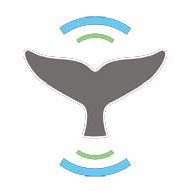Whale Alert: Free iPad and iPhone App Helps Mariners Avoid Right Whales and Monetary Fines

Collision between whales and ships is a problem that is drawing world-wide attention. From the United States to the Mediterranean to New Zealand, mariners are increasingly being asked to take action to reduce the risk of such collisions, but receive little help in doing so. Led by scientists from the US National Oceanic and Atmospheric Agency’s (NOAA) Stellwagen Bank National Marine Sanctuary, a consortium of scientists, industry representatives and conservation groups have developed a solution. Whale Alert is a free mobile application that provides the maritime community and others with up-to-date information pertaining to North Atlantic right whale management initiatives and regulations, and displays them on nautical charts. NOAA is the United States agency with responsibility for protecting endangered marine species, such as the North Atlantic right whale.
How can Whale Alert Benefit Mariners?
In US waters, mariners are required to abide by regulatory management initiatives designed to protect the highly endangered North Atlantic right whale (U.S. Law 50CF 224.105). Failure to comply with these regulations can result in substantial fines. To date, NOAA has issued penalty assessments ranging from $11,500 to $92,000 to ships violating speed restrictions in designated Seasonal Management Areas (SMAs). However, it is difficult for mariners to stay updated on management measures and to know when they are in a special management zone. Whale Alert provides all mariner-relevant right whale information on digital nautical charts and displays them on an iPad or iPhone. Using an iPad to display Whale Alert has the advantage of keeping information separate from a ship’s ECDIS screen, thereby not inferring with navigation and safety. The charts can be automatically updated to ensure that mariners are receiving the most recent information possible. Whale Alert provides mariners with “one-stop shopping” for all the information they need to comply with measures designed to protect right whales.

What will Mariners See on Whale Alert?
Whale Alert provides mariners with a visual display of all relevant right whale management initiatives on digital nautical charts via their iPad or iPhone, including:
- Current ship location - An icon depicts a ship’s real-time GPS derived location;
- Seasonal Management Areas (SMA) – SMAs are ocean areas in which the US Government requires mariners to transit at speeds =10 knots. SMAs are active only during specific times of the year when right whales are historically present. SMAs appear on Whale Alert charts as orange-colored areas and are only displayed during the time period in which the SMA is active. As a ship enters an SMA a pop-up window (triggered by their GPS location) appears notifying the mariner that he/she should be traveling at a speed =10 knots;
- Mandatory Ship Reporting (MSR) – MSRs are areas that, when entering, a ship must contact the US Coast Guard to receive right whale information. MSRs are displayed in Whale Alert as a blue line that boarders the reporting area. When a ship enters an MSR, a pop-up display appears reminding the mariner to report to the US Coast Guard and providing information on reporting procedures;
- Areas to be Avoided (ATBA) – IMO sanctioned ATBAs to protect right whales appear on the Whale Alert charts in red when and where they are active;
- Recommended Routes (RR) - NOAA has established RRs in key right whale habitats that guide ships through areas with a reduced likelihood of collision with whales. RRs are displayed in purple;
- Dynamic Management Areas (DMAs) – DMAs are ocean areas where an aggregation of right whales has been sighted outside of an SMA. DMAs typically last 2-weeks and mariners are requested to reduce speeds to = 10 knot when transiting. Active DMAs zones are shaded grey on the Whale Alert display;
- Near real-time acoustic alerts – Right whale acoustic detection buoys use moored hydrophones and satellite communications to quickly identify the presence of right whales in the TSS through and around NOAA’s Stellwagen Bank National Marine Sanctuary. Detection buoys appear on Whale Alert charts as green circles. The circles turn yellow to indicate that a right whale has been detected within the past 24 hrs and a = 10 knot speed is requested;
Whale Alert was designed with considerable input from the maritime community. The Massachusetts Port Authority and Boston Harbor Pilots Association were lead groups, while NYK Line and the Norwegian and Holland America cruise lines were part of a test fleet to gain additional industry input and make the app operational. The US Coast Guard was instrumental in working with the team to transmit information via AIS. On the conservation side, the International Fund for Animal Welfare provided program input and funding. In addition to the Stellwagen Bank National Marine Sanctuary, scientists and engineers from the Bioacoustic Research Program at Cornell University, the Center for Coastal and Ocean Mapping at the University of New Hampshire, NOAA’s Northeast Fisheries Science Center, and the Woods Hole Oceanographic Institution provided expertise supporting different aspects of the app. EarthNC, with extensive experience in spatial mapping and real-time mobile data acquisition, developed the app itself.
What Else can Whale Alert Provide Mariners?
Sightings of whales can be submitted directly to our Whale Alert database with the help of the whale ID guide contained in the app.

iPads can easily be configured such that only approved apps can be deployed, thereby assuring safety on a vessel’s bridge. For more information about Whale Alert, including set up requirements and instructions go to whalealert.org To provide feedback and ideas to the Whale Alert development team you can fill out a survey at: stellwagen.noaa.gov/protect/survey.html. To obtain the free Whale Alert mobile app go to the App Store or whalealert.org.

Real-time NOAA PORTS® (Physical Oceanographic Real-Time System) weather and tide data are displayed

